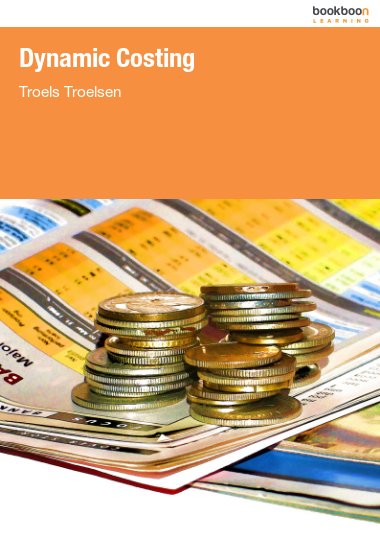The objective of operations management is to organize the production and sales/marketing efforts in the most appropriate way for the business.
The purpose of a business is to produce a series of goods or services (from this point on, these terms are considered the same and are referred to as goods). It is a deciding factor that this process is achieved as cheaply as possible.
- Private business products: A Harboe non alcoholic beer, a box of Legos, a newspaper, a car repair.
- Public business products: A full year’s work for a pupil in 7th grade, a hip operation, administration of fines
The challenge and problem of costs can be described as:
1. Production of a good requires an effort or consumption of resources that in most cases have a price, i.e. a minimal consumption of re-sources, at the lowest possible price, is essential.
2. This consumption of resources is called costs
3. Producing a specific good at the lowest possible cost is often deci-sive for the long-term success of a business.
4. Therefore it is important to be able to establish costs in order to obtain the necessary management information, required for achiev-ing lowest possible production costs.
5. Achieving as low costs as possible is a very holistic job, involving management, business culture, the right technology, the right inter-nationalisation, the optimal size of production etc.
6. The cost of producing a good vary in terms of the relevant decision-making occasion, which is the content of a dynamic perspective.
A business can, among other things, be described as a string of contracts (nexus, nodes), which combined comprise the fundamental base, the production, and the liquidity access (sales or grants/appropriations).
Such contracts (to buy, sell, establish a production facility, hire staff etc.) are commonly agreed upon with contracting entities outside the group of owners and decision makers. It is therefore essential to understand a number of models which place the firm in the context of its environment.
Concerning the course of and decision-making situations in operations management, there are three central problem areas relating to a firm’s decision analysis, each of which is described in compendiums, paving the way for the possibility of a future book.
- The firm in context (available in English)
- Dynamic Costing, costs in a dynamic perspective
- Dynamic Pricing, pricing in a dynamic perspective
These fields will all be described based on known and solid operations management models and theories. An extension will though be directed towards structuring decision-making in terms of the decision-making circumstances and conditions relevant to the specific occasion.

